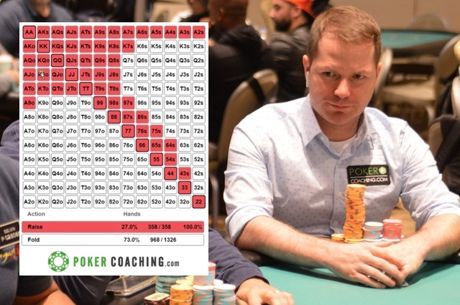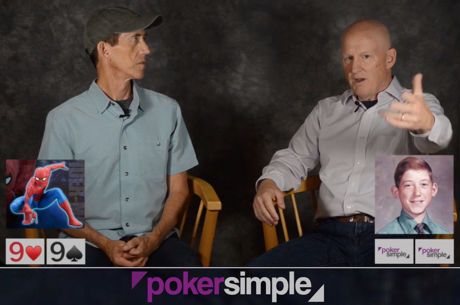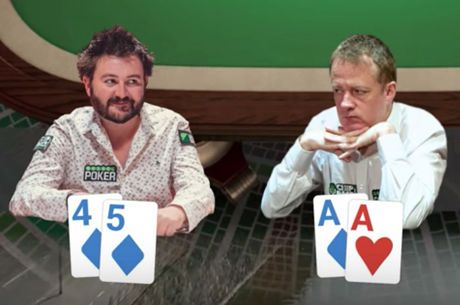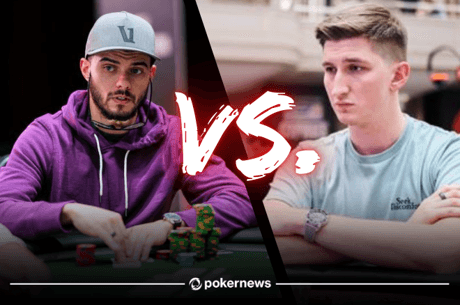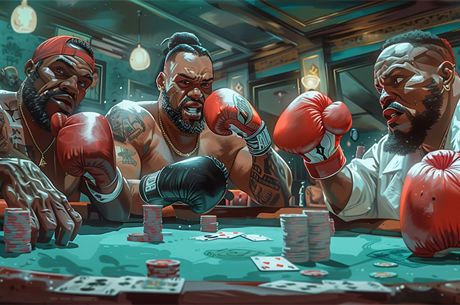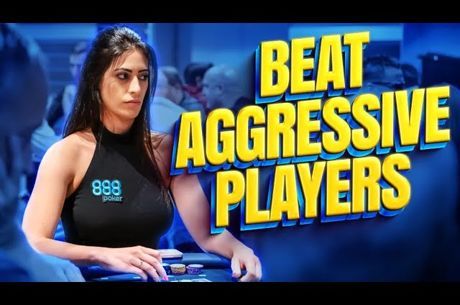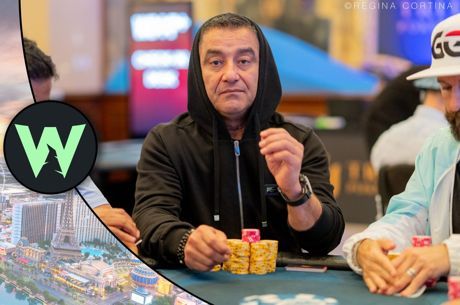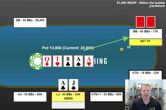Playing Top Pair, Bad Kicker in a Multi-Way Pot
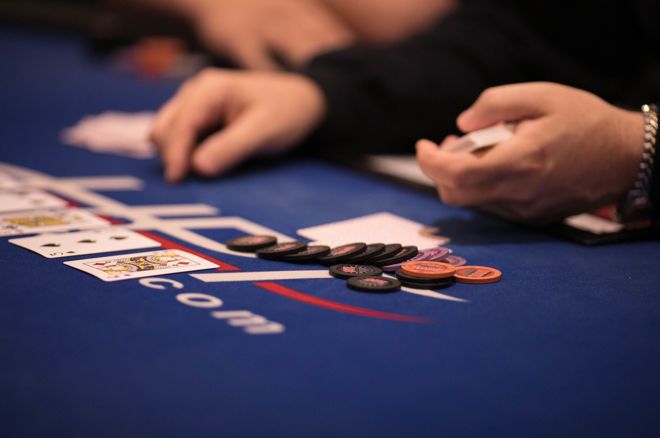
In small stakes tournaments, top pair is a hand you can and should play in a variety of ways.
When you have top pair, no kicker you often have a good candidate to check. When you have top pair, top kicker you should often be betting for value.
That said, there are several factors that can sway things one way or another. The number of players in the pot, the board texture, and the stage of the tournament all can (and should) affect how you decide to play your top pair.
Let's look at a real hand from a real tournament to see what we can do with top pair, bad kicker.
Flopping top pair: C-bet or no?
This hand comes from the $11 buy-in Sunday Storm on PokerStars at a point when they were approaching the bubble but not yet on it.
There were about 5,500 players left with 4,000 getting paid. In a huge field tournament like the Storm, many players are eliminated every minute, so going out on the bubble should almost never happen. But we are not quite there yet.
Our hero opens K♦9♣ in middle position, and the button, small blind, and big blind all call. Hero started the hand with 29 big blinds and is covered only by the big blind while the button and the small blind each have 23 BBs or so. The pot is already big (10 big blinds), and the stacks shallow relative to it.
The flop comes K♣8♦4♠ and it checks to our hero who has flopped top pair with a not-so-great kicker.
We could bet for value. Of course, since we are four ways to this flop, we could very well be beaten. Someone could have a better king or a set, and the big blind can also have king-eight and king-four. Most of those better hands would just call a continuation bet, king-queen is not strong enough to raise, and sets do not really need to protect their hand. But for the most part, this is a hard flop to hit and we usually have the best hand.
On the other hand, if we face a raise, we probably have to fold or call once and fold later to more aggression. It seems hard to be beat when we face a raise, but our hand is simply too weak to indulge our curiosity too much. This is mostly because of the multi-way situation — stacking off ranges get tighter the more people see a flop.
The fact that we do not need to protect our hand much makes a strong argument for checking. We have showdown value, but our hand is only worth one or two bets. When there is not much need for protection, those bets can come later just as well as sooner. Besides, someone might turn something that can pay us off.
In the end our hero decides to check, and the button checks as well.
Turn coordination
The turn comes the 10♦, creating plenty of opportunities on this board for all ranges involved. The small blind checks and the big blind fires 70 percent of the pot — 7 BB into 10 BB.
We could easily be beaten here by the big blind with hands like K-T, T-8, 8-4 suited, or K-4. On the other hand, we are probably far ahead of the button and the small blind.
Not only do the button and small blind have little equity against our hand, they are probably often folding that equity after not betting the flop (and in the small blind's case, not stabbing the turn). If they do not have a 9-7, Q-J, or a flush draw, they are probably just folding. (We also have the 9♦ in our hand, making those hands a little less likely.) Problematically, though, those ranges do cut down on the big blind's potential bluffs.
Our hero calls with some trepidation going into the river. The button and the small blind get out of the way.
River options and ICM considerations
The river brings the 2♣. So we flopped K♣8♦4♠, turned the 10♦, and rivered the 2♣ — the board completely bricked out.
We feel we have the best hand pretty often. We lose to T-8, 4-4, K-4, K-T in the big blind's hands. But we beat all 5-6, 5-7, and 6-7 hands, all J-9, 9-7, and Q-9 hands, and all turned diamond draws that miss. There are just so many potential draws on the turn and not one of them came in.
So if we face a shove, which will be 20 BB into 24 BB effectively, we should probably click call just about always, unless we have a stone read on our opponent that suggests we shouldn't.
In the actual hand, the big blind checks. Now... do we bet or check behind?
Can we ever be beat? It seems difficult. But then again, if we think about how our hand appears to the big blind, it looks like we have A-J, A-Q, J-9, Q-J, or turned diamonds. That is to say, we look like we have some misses, even if we can't have some of those with lower cards. But the big blind's most likely bluff catchers are strong T-x and weaker K-x hands (and our nine kicker will play against many of the K-x hands).
Realize that in this spot, if you are hand-for-hand on the bubble, you should shove, expecting the times you get called by better you will still cash because you began the hand with 29 BBs. If you are close enough to the money to wait a bit for hand-for-hand to begin, you should time bank before making the shove, basically ensuring you do not bubble.
But if you are just outside of that, let's say 4,160 left with 4,000 paid, there is a strong case for just checking back. How thinly we should value-shove is a function of how close we are to the bubble, but that ends once we can get to hand-for-hand.
In the actual hand our hero shoved and was snap-called by K♥Q♥, much to his surprise.
Even so, one does not need to be best when called 100 percent of the time here, so it would be mistaken to consider this a misplay of top pair, bad kicker, even if the results did not go hero's way.
The Stars Group is a majority shareholder in iBus Media

